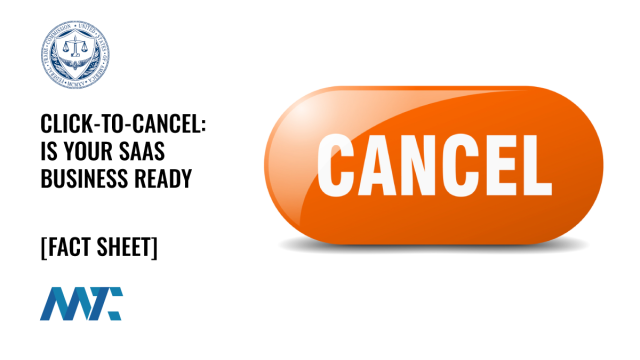It’s a story nearly every SaaS customer has lived through: signing up is a breeze—just a few clicks, your credit card number, and you’re in. But when you try to cancel? Suddenly, it’s like trying to escape a maze. You’re told to call a customer support line. Or open a ticket. Or worse, navigate multiple screens only to find the cancel button buried under vague options like pause or downgrade.
These frustrating experiences haven’t gone unnoticed by the FTC.
The Commission received nearly 70 consumer complaints per day on average about negative option and recurring subscription practices, up from 42 per day in 2021.
Federal Trade Commission
That trend and the overwhelming consumer feedback it generated have led to a significant policy shift that directly impacts SaaS providers and their customers.
Last October, the FTC announced its final Click-to-Cancel rule, which requires businesses to make it just as easy for consumers to cancel subscriptions as it is to sign up for them. The rule, which applies broadly to recurring billing and negative option programs, goes into effect 180 days after publication in the Federal Register—meaning SaaS companies likely have until this month to comply.
This is more than a procedural change. It reflects a deeper push for fairness in how subscription-based services are marketed, consented to, and ultimately exited. While the final rule softened some early proposals, like requiring annual reminders, it still sets strict requirements to reshape how SaaS providers manage signups, consent, and cancellations.
What SaaS Providers Need to Know
The rule directs software companies, especially those offering trials, freemium upgrades, or monthly service plans, to review and simplify customer flows. Under the new regulation, complexity is no longer a retention strategy—it’s a liability.
Rather than repeating the entire contents of the rule, here are the key takeaways every SaaS provider should act on now:
Cancellation must be as easy as sign-up: If customers can start their subscription with a few clicks on your website, they must also be able to cancel it with comparable ease through the same channel.
No more “call to cancel” hurdles: Requiring users to speak with a rep or go through an email or ticketing system to cancel is now a red flag. Automated and accessible cancellation online is the new baseline.
Clear and conspicuous disclosure is required before billing: All key terms—billing frequency, total cost, cancellation terms—must be presented clearly before the user inputs payment details.
Informed consent is mandatory for any recurring charge. Customers must actively agree to the negative option (e.g., an auto-renewing subscription). Silence, pre-checked boxes, or vague language won’t cut it.
Retention offers must be optional: You can still make a pitch to retain customers, but only after asking if they want to hear it. By default, you can’t embed a hard sell into the cancellation process.
The rule applies across media and sectors: The same expectations apply whether the subscription starts via web, phone, mobile app, or even print. If you’re selling recurring access, you’re subject to this rule.
What Comes Next
SaaS companies should consider this month (April 2025) as the compliance deadline. The FTC is expected to provide further guidance, but the rule is finalized, and businesses that delay updates may face penalties.
This isn’t just about avoiding fines but meeting modern customer expectations. Not having a simple way for users to cancel their subscription isn’t a retention strategy… it’s a horrible user experience that questions your product and your company’s legitimacy.
Too often, businesses make people jump through endless hoops just to cancel a subscription. The FTC’s rule will end these tricks and traps, saving Americans time and money. Nobody should be stuck paying for a service they no longer want.
Lina Khan, FTC Chair
In the competitive SaaS landscape, trust is currency. Giving users a clear way out isn’t just legally required—it might just be what brings them back later.
©2025 DK New Media, LLC, All rights reserved | Disclosure
Originally Published on Martech Zone: The FTC’s “Click-to-Cancel” Rule Takes Effect This Month—Is Your SaaS Business Ready?

